In the ’20s and ’30s, Alfa Romeo was unbeatable among Sports vehicles, and won 11 editions of the Mille Miglia as well as four 24 Hour Le Mans races, while the one-seaters Gran Premio Tipo B were the stars of immortal endeavours with Tazio Nuvolari, Achille Varzi, and Rudolf Caracciola. In 1933, Alfa Romeo became state-owned and the races were managed by Scuderia Ferrari, while Gran Prix victories kept rolling in with the Tipo C, capable of winning and stunning the American Vanderbilt Cup in 1936. Then the slim 1.5 litre “vetturetta” GP Tipo 158 had its debut; it was nicknamed “Alfetta” and destined for a radiant future. Alfa Romeo first racing car was made in 1913.
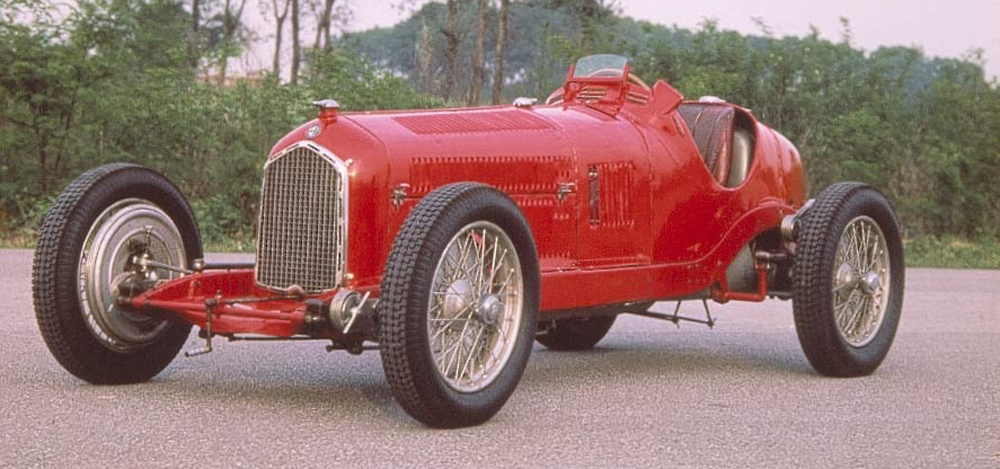
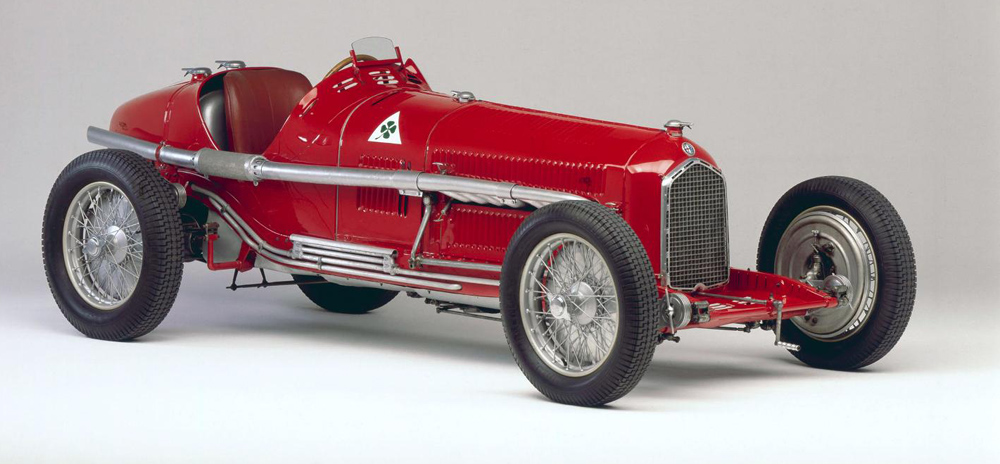
Gran Premio Tipo B P3 (1932)
The Alfa Romeo Tipo B, better known as the P3, is one of Vittorio Jano’s masterpieces. Standout technical features of the legendary single-seater racer include its dual-supercharged 8C straight-eight engine and an innovative rear suspension which helped it out-handle its competition. All the most famous drivers of the 30s have sat behind the wheel of Tipo B cars: Nuvolari, Varzi, Caracciola, Trossi, Chiron and Moll all tasted victory in major international competitions in 1932 and 1933. Tazio Nuvolari’s victory over the strong field of German competitors at Nürburgring in 1935 is a particular highlight of the P3’s illustrious history.
Engine: 8 cylinders in line, 2,654cc, twin-camshaft, dual supercharger
Power: 212hp at 5600 rpm
Top speed: 232mph
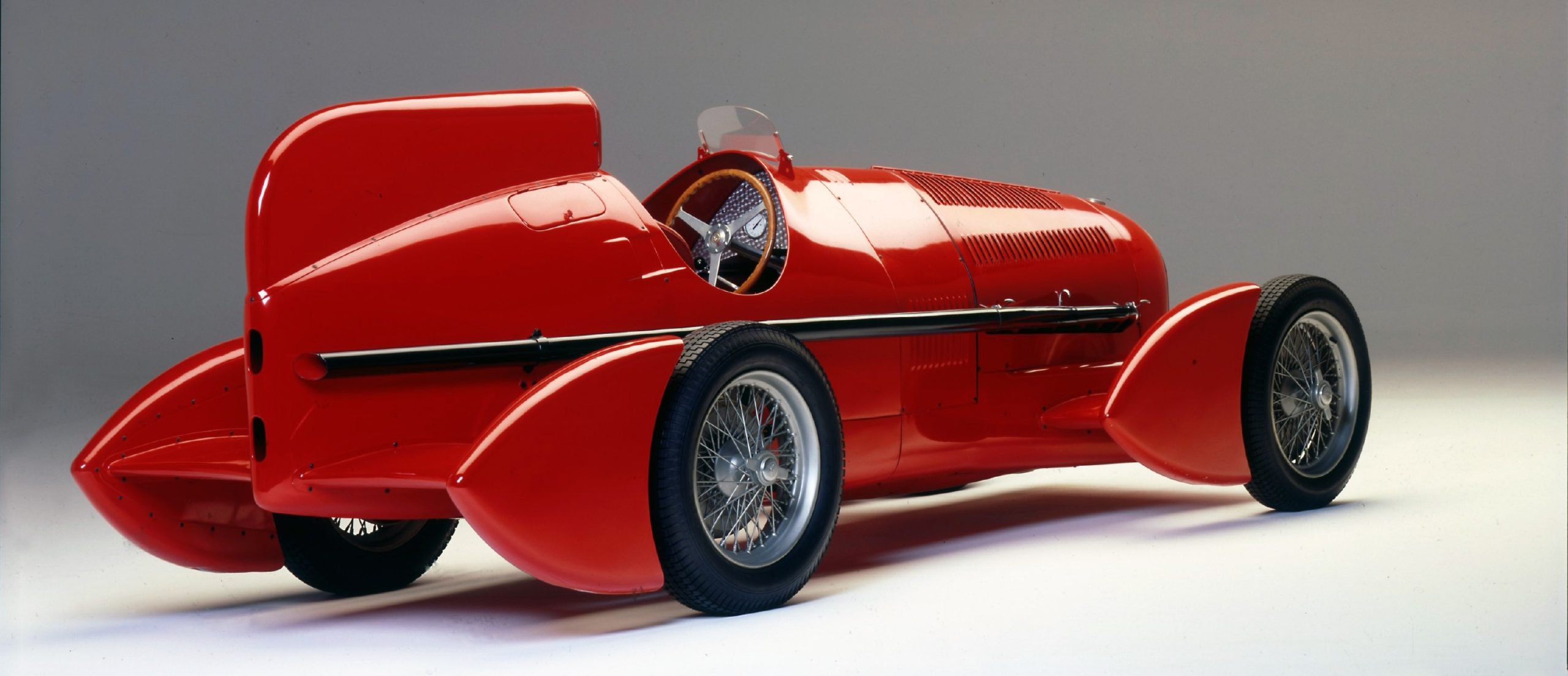
1934 Alfa Romeo Tipo B Aerodinamica
The 1934 Alfa Romeo Tipo B Aerodinamica, also known as the Alfa Romeo P3 Aerodinamica, is a fascinating and historically significant race car. Here are the key details about this remarkable vehicle:
- Model Year: 1934
- Manufacturer: Alfa Romeo
- Designer: Mario Revelli de Beaumont and Carrozzeria Touring
- Purpose: Designed for Grand Prix racing
Design and Styling
- Body Style: Single-seater race car
- Aerodynamics: The Tipo B Aerodinamica was notable for its advanced aerodynamic bodywork. The streamlined design was aimed at reducing drag and increasing top speed, which was innovative for its time.
- Distinctive Features: The car featured a fully enclosed body with a smooth, rounded front end, integrated fenders, and a streamlined tail. The cockpit was enclosed by a narrow canopy, enhancing the car’s aerodynamic efficiency.
Engine and Performance
- Engine: 2.9-liter supercharged inline-8 engine
- Power Output: Approximately 255 horsepower at 5400 RPM
- Transmission: 4-speed manual gearbox
- Performance: The Tipo B Aerodinamica was designed for high-speed performance on racing circuits, leveraging its powerful engine and aerodynamic design to achieve impressive speeds.
Chassis and Suspension
- Chassis: The Tipo B Aerodinamica used a lightweight and rigid steel chassis, contributing to its agility and performance on the track.
- Suspension:
- Front: Independent with leaf springs
- Rear: Live axle with semi-elliptic leaf springs
- Brakes: Drum brakes on all four wheels, which were standard for the period.
Historical Significance
- Grand Prix Racing: The Tipo B Aerodinamica was part of Alfa Romeo’s successful racing program during the 1930s. It was based on the Alfa Romeo P3, one of the most successful Grand Prix cars of the era.
- Aerodynamic Innovation: The car’s aerodynamic design was a pioneering effort in motorsport, reflecting early attempts to apply aerodynamic principles to improve race car performance.
- Legacy: Although the Tipo B Aerodinamica itself was not produced in large numbers, it represents an important chapter in the development of racing technology and aerodynamics.
Racing Achievements
- Competition: The Tipo B Aerodinamica competed in various Grand Prix events, contributing to Alfa Romeo’s dominance in racing during the early 1930s.
- Performance: The car’s combination of powerful engine and advanced aerodynamics helped it achieve competitive speeds and notable success on the track.
Collectibility and Preservation
- Rarity: The Tipo B Aerodinamica is an extremely rare and valuable collector’s item today, with very few surviving examples.
- Historical Value: Due to its pioneering design and racing heritage, it is highly prized by collectors and historians of automotive and racing history.
The 1934 Alfa Romeo Tipo B Aerodinamica stands as a testament to the innovative spirit of Alfa Romeo during the early 20th century. Its advanced aerodynamic design and racing success have cemented its place in the annals of automotive history.
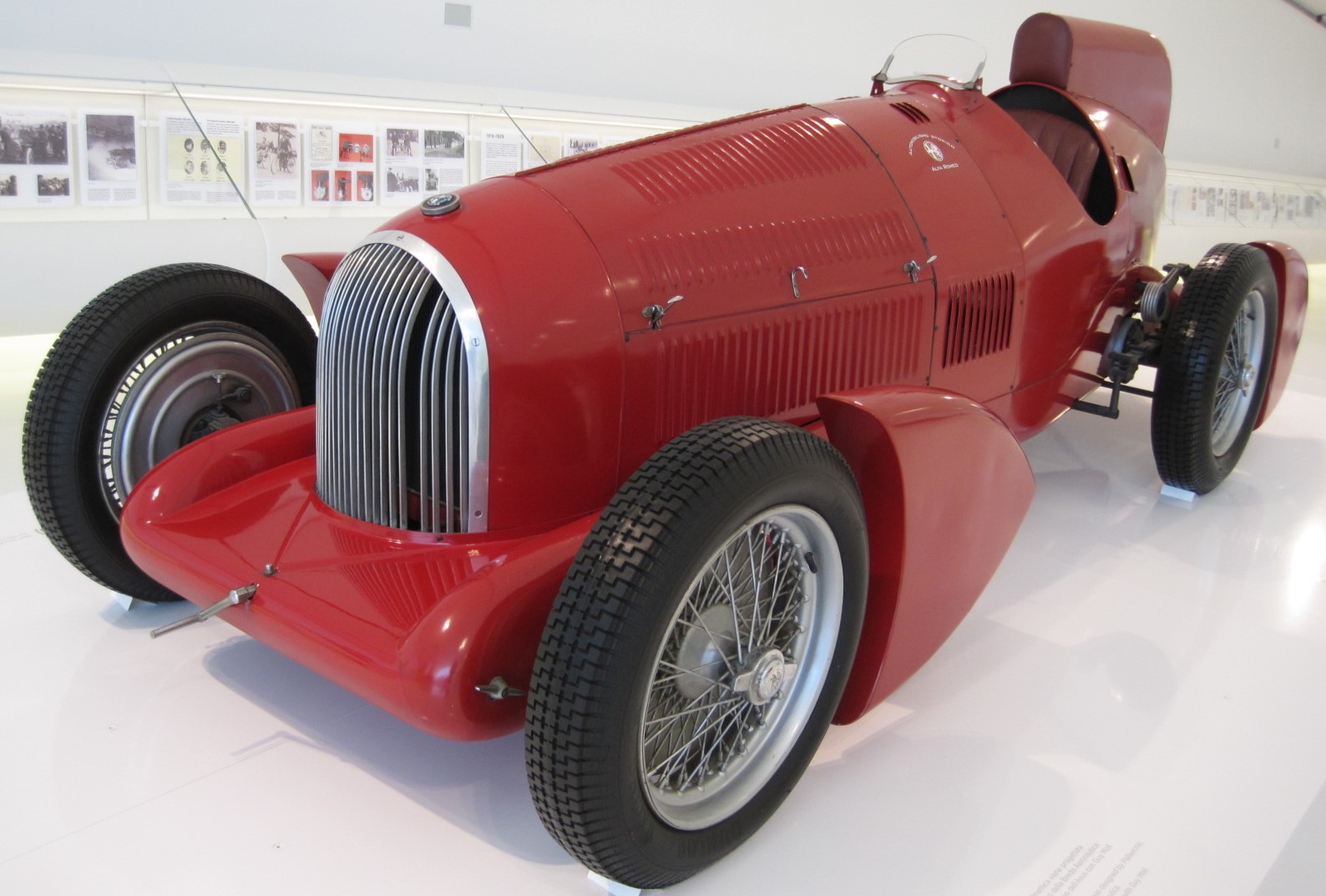
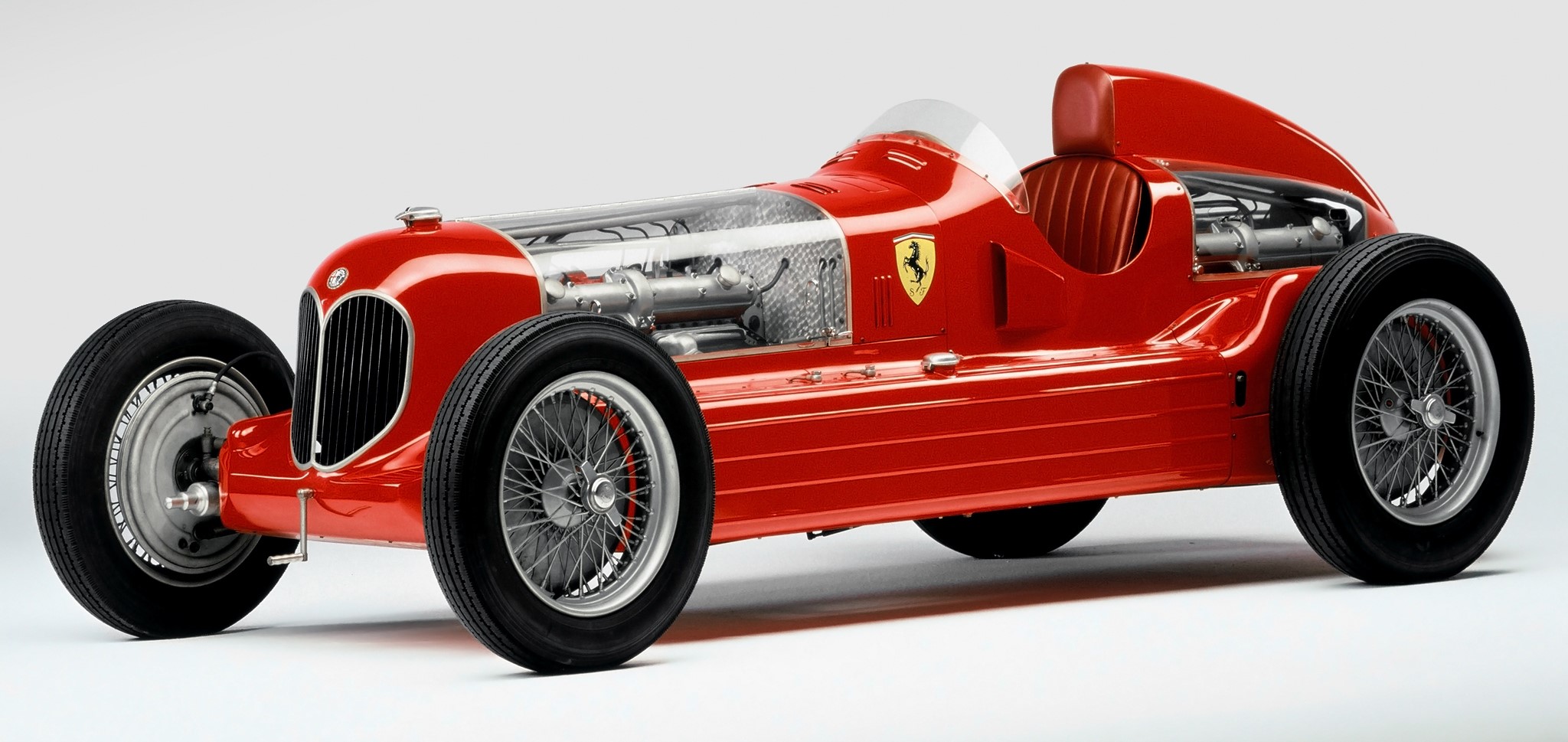
1935 Alfa Romeo Bimotore
The 1935 Alfa Romeo Bimotore is a significant and innovative racing car known for its unique twin-engine design. Developed to compete against the dominant Silver Arrows of Mercedes-Benz and Auto Union, the Bimotore aimed to push the boundaries of speed and performance in Grand Prix racing. Here are the key details about this extraordinary vehicle:
- Model Year: 1935
- Manufacturer: Alfa Romeo
- Designer: Vittorio Jano
- Purpose: Designed specifically for Grand Prix racing
Design and Styling
- Body Style: Single-seater race car
- Aerodynamics: The Bimotore featured a streamlined, elongated body designed to accommodate its unique twin-engine layout and enhance high-speed stability.
- Distinctive Features: Its long chassis and distinctive twin-engine configuration were the most striking aspects, necessitating an elongated body to house both power units.
Engine and Performance
- Engine Configuration: Twin-engine layout with two supercharged 3.2-liter inline-8 engines
- Combined Power Output: Approximately 540 horsepower (270 hp from each engine)
- Transmission: 4-speed manual gearbox
- Top Speed: Estimated top speed of around 200 mph (320 km/h), making it one of the fastest cars of its time
- Performance: The twin-engine setup provided immense power, aimed at delivering exceptional straight-line speed to compete with the advanced German competitors.
Chassis and Suspension
- Chassis: Reinforced steel chassis to handle the extra power and weight of the twin engines
- Suspension:
- Front: Independent suspension with wishbones and transverse leaf springs
- Rear: Live axle with semi-elliptic leaf springs
- Brakes: Drum brakes on all four wheels, which were standard for racing cars of that era but faced challenges due to the high speeds achieved.
Historical Significance
- Racing Strategy: The Bimotore was developed as a response to the increasing competition from Mercedes-Benz and Auto Union, who were dominating Grand Prix racing with their advanced technology and powerful cars.
- Speed Records: The Bimotore set several speed records, including a top speed attempt where it reportedly reached 200 mph (320 km/h), showcasing its raw power and potential.
- Legacy: While it did not achieve significant success in races due to its complexity and the strain on its components, the Bimotore remains an important part of Alfa Romeo’s racing heritage and a symbol of innovation in motorsport engineering.
Racing Achievements
- Debut: The Bimotore made its racing debut in 1935, driven by famed drivers such as Tazio Nuvolari.
- Challenges: Despite its impressive speed, the car faced reliability issues and handling challenges, which limited its success on the racing circuit.
Collectibility and Preservation
- Rarity: The Alfa Romeo Bimotore is an extremely rare vehicle, with very few examples ever built.
- Historical Value: As a pioneering experiment in racing car design, the Bimotore holds a special place in automotive history and is highly valued by collectors and enthusiasts.
The 1935 Alfa Romeo Bimotore stands out as a bold and ambitious attempt to push the boundaries of speed and performance in Grand Prix racing. Its twin-engine configuration and quest for unprecedented speed make it a fascinating chapter in the evolution of racing technology.
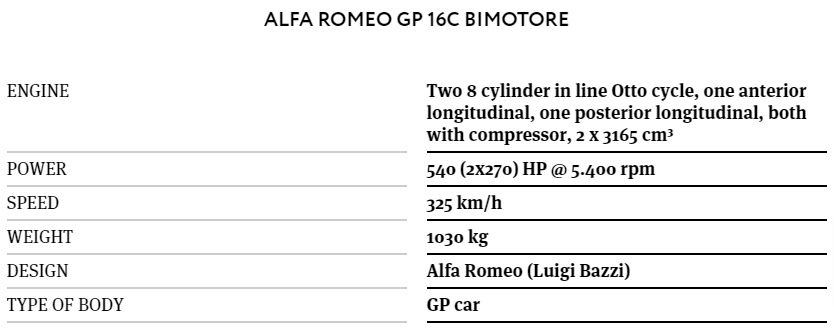
In 1935, Scuderia Ferrari was still the official racing team for Alfa Romeo, which provided it with the cars to compete in races all over the world. Enzo Ferrari, who wanted to give his drivers an outstandingly powerful car, decided to have one designed and built with two engines.
Time was short and Luigi Bazzi had only a few months to prepare the Alfa Romeo 16C Bimotore. The idea was as ambitious as it was complex, but Bazzi, starting from the chassis of an Alfa Romeo P3, managed to find space for two straight eight engines of 3165 cc each, one in the usual place in front of the driver and the other behind him, and create one of the most original racing cars of any era.
The car had rear-wheel drive, with the rear axle powered by a differential mounted at the output of the three-speed gearbox, and two long half-shafts in a “V” configuration, driven by final drives and acting on the rear wheels. The rear engine driveshaft passed “straight through” the gearbox and connected to the flywheel of the front engine and the single clutch, which thus controlled the power from both the straight eights. Two fuel tanks were mounted along the sides of the car, replacing the one normally fitted behind the driver, in the space now occupied by the second engine.
The mathematical sum of the 270 horsepower generated by each eight-cylinder engine, supercharged by volumetric compressors, was 540 HP: an extremely high value even for a Grand Prix car.
The “Bimotore” was to go down in history for the records it set for the flying kilometre and flying mile.
In the Modena workshops, Bazzi managed to prepare two cars: one for Louis Chiron and one for Tazio Nuvolari. The car made its debut at the Tripoli Grand Prix on 12 May 1935. The long straights of the Mellaha circuit in Libya appeared to be the ideal terrain for testing the car and giving all this horsepower its head: Nuvolari and Chiron finished fourth and fifth respectively. Alfa Romeo tried its luck again at Avusrennen on 26 May, and Chiron succeeded in gaining second place.
On 15 June 1935, on the Altopascio-Lucca section of the new motorway from Florence to the coast, “Nivola” once again climbed into the cockpit of the Bimotore for an attempt at the flying kilometre and flying mile land speed record. The figures from the chronometers were an average speed of 321.428 km/h over a kilometre, with an average time of 11.20 seconds, and an average speed of 323.125 km/h for the mile, with a time of 17.93 seconds: the maximum speed was around 364 km/h. Nuvolari received congratulations from many sides, including from his great rival Achille Varzi, who insisted on being present and was unstinting in his praise for the record-breaker.The car on show at Passione Engadina, a milestone in the racing partnership between Ferrari and Alfa Romeo, belongs to the FCA Heritage collection. It is an unusual car, normally on permanent display at the Museo Storico Alfa Romeo in Arese, fitted with clear panels to show the positions of the two engines; it bears the Alfa Romeo badge of the period on its bonnet, and the Ferrari Prancing Horse on its sides.
ALSO SEE:
1931-1938 Alfa Romeo 8C & History Of The Quadrifoglio

You must be logged in to post a comment.